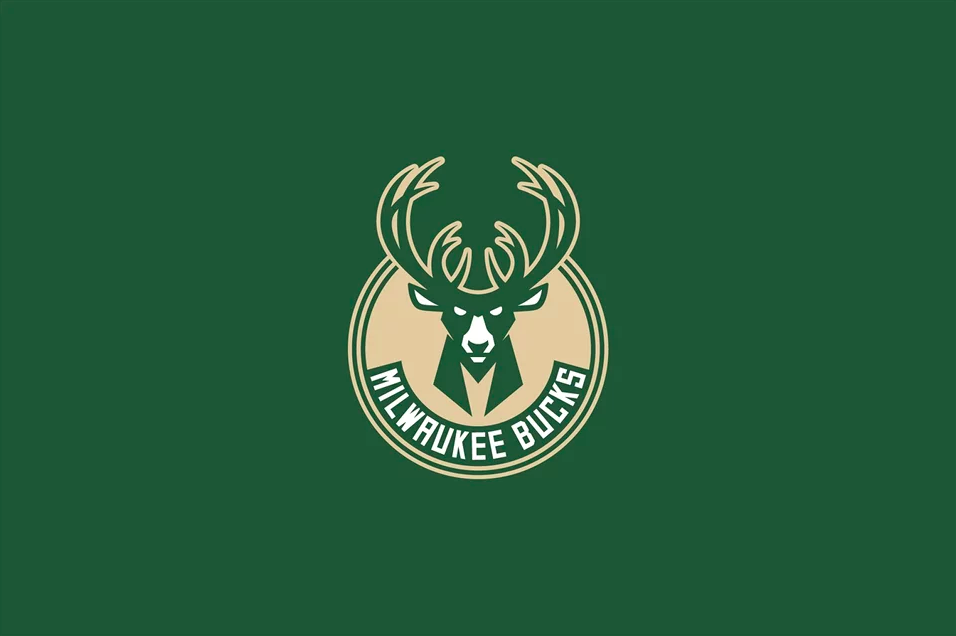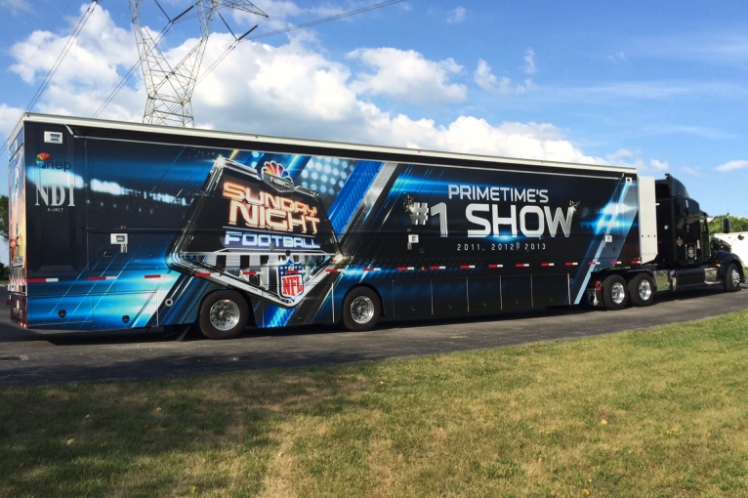Where will LeBron go? It's a question that plenty of people don't give two shits about, but one that ESPN and "Le King" himself want you to wonder. ESPN sourced 30 artists to create billboards pitching LeBron on their hometown NBA team. So it's not just creative—it's personal.
Read MoreSinan Dagli & BSSP Give Kevin Garnett Another Shot in 2K18 Ad
The NBA Playoffs are here. But current players on lottery teams aren't the only ones bummed to be missing out on the glory. What about all of the retired champions, like Kevin Garnett, who can almost taste their past victories? Below, WNW Member and BSSP's Associate Creative Director Sinan Dagli tells us about NBA 2K18's latest campaign, "KG's Back."
Read MoreProfiles of the Week: Sports!
Profiles of the Week: Sports!
The start of the NFL, NBA, and NHL seasons. The MLB Playoffs. There's no better time than fall for professional sports in the U.S. Which means there's also no better time to catch some of our members' immortalized creative contributions to professional leagues, teams, and athletes. Scroll down to see some of the WNW creatives elevating art and athletics on the big stage.
Darrin Crescenzi, Designer. New York.
Justin Thomas Kay, Designer. New York.
Simi Mahtani, Art Director. New York.
Elias Stein, Illustrator. Decatur.
Molly Erdmann, Designer. New York.
Discover more creative talent and projects like this on Working Not Working. Head here to subscribe to full weekly curated lists like "SPORTS!" If you don't have a Pro plan, sign up here first.
If you're a WNW Member with new work, exhibits, products, or news to share, email us.
WORK: CHARLOTTE HORNETS REBRANDING
WORK: CHARLOTTE HORNETS REBRANDING
The 2014-2015 NBA season is here! To celebrate, we caught up with WNW Member #3259 Darrin Crescenzi, who designed the stunning new logo for the revamped Charlotte Hornets. Below, Darrin shares the details about his specific role, the approach he took, and the pressure to deliver a killer product to deserving fans. "When you start messing with a team logo, you're messing with a big part of culture and a big part of people's lives. You need to wield that responsibility with a sense of reverence for the fan base, and you have to make serious value judgements about what existing equities need to be abandoned in the name of growth." Slam dunk, Darrin.
The return of the Charlotte Hornets is huge news in the sports world. How’d you get the opportunity to design the new team branding?
The opportunity to work on the new Hornets visual identity came by way of an old comrade who now heads Nike's Brand Jordan design group. There was a strong vision in place from both the franchise and the Jordan team on creating a look that would epitomize the "Jordan Brand aura," which is a pretty esoteric description to outsiders but is very clear to me, having worked in-house at Nike for many years. I imagine my inclination toward reductive brand design in addition to an ability to hit the ground running made for a pretty seamless fit. Hard to say for sure, but I'm really happy they called me.
It's important to note my role on this project was to contribute concepts for the Hornets primary logo, which along with work from Brand Jordan's design team as well as the branding agency Rare (known for their work on the Pelicans identity) would ultimately result in the final branding package. Whoever had the best idea, that's where we'd go with it. It was a very collaborative undertaking, and I can't say enough about the talent of both Jordan's in-house team and the folks at Rare.
Did you approach this differently than any of your other branding projects?
There was a lot about this process that was atypical for me. Much of that had to do with collaborating digitally with folks based in both Beaverton and Hattiesburg, Mississippi, while I'm in New York City. There was also a clear vision for the Hornets' brand established before I was involved in the project, so much of the initial "discover" phase of a design engagement was truncated, and I was able to jump into creative development right away. I'm typically heavily involved in the creation of that brand strategy and vision, so being able to just ideate was a really fun change of pace from my usual day-to-day.
Within that broader team, my role was to push the boundaries of what an NBA brand identity could be, by exploring an authoritative, austere graphic language that has worked to make the Jordan brand so iconic but isn't necessarily seen much in the NBA. Basically, I tried to scare the shit out of everybody.
Was it different designing a logo for a sports team vs. one for a brand?
Much of my branding work deals in making symbols, and understanding semiotics (in my case the embedding meaning into the inherent geometry of a graphic symbol) is a huge part of my process. The results are most often imperceptible, dealing in things felt more than explicitly understood. In contrast, what we think of in America as "sports logos" typically eschew this type of subtlety, in favor of more overt expression of emotion through illustration of a mascot. Expression, pose, color, rendering style are the primary drivers of communication. I think my modernist ambitions and somewhat archaic approach to identity design makes for an interesting dialogue when applied to something like a sports identity, which in this particular instance was desirable and resulted in a strong outcome.
Sports team branding is without a doubt a whole different beast than branding for a more traditional corporate entity. I've worked on brand identity evolutions for both collegiate and professional sports teams — some successful, but most languish on hard drives never to see the light of day. My boneyard of team rebrands is pretty epic. The biggest difference is in the attitude of the people you're designing for. Truly, nobody thinks much about an updated brand identity for an appliance maker or a coffee brand. There is emotional distance with that type of design, where you (and the client) can evaluate work based on its merit to the business objectives: Is it legible? Is it differentiated? Does it feel appropriate and authentic to what the company does? These are relatively objective traits in an otherwise subjective field, and a good designer can rationalize their creative decisions as solutions to a given problem.
With sports franchises, people very much DO give a damn about the logo. A true fan's self-identity can be heavily wrapped up in their allegiance with a particular sports team, and such passion isn't rational and results in complications. In this age where technology has enabled individuals to define themselves by a hyper-specifc set of interests, passions and opinions to the exclusion of others, sports is one of the last places where people from different backgrounds assemble together and willingly put self-interest aside to become part of something bigger than themselves. It's a very powerful force, and that's why creating team identities is both insanely alluring and frequently frustrating. When you start messing with a team logo, you're messing with a big part of culture and a big part of people's lives. You need to wield that responsibility with a sense of reverence for the fan base, and you have to make serious value judgements about what existing equities need to be abandoned in the name of growth.
I think this project was set up perfectly for success, in that we were reverting to something fans already loved, versus the Bobcats identity which, at least to me, felt like there was a lot of indifference towards.
Was the older logo at the forefront of your mind during the process?
Quite the opposite! I love that thing as much as any fan of the game, and the undeniable success of the original Hugo logo changed the visual landscape not just of basketball, but of sports in general. For better or worse, the rush to create visual assets that would sell based on their own merit, rather than that of the team, was on. I'm not sure there's anything that sums up the design zeitgeist of the late '80s quite like Hugo.
When I got involved in the Hornets rebrand, there was an understanding that a version of the old logo would live on in the form of an an updated secondary graphic (which I think Rare absolutely crushed), but the team really wanted a new visual language to establish themselves as a competitive force, putting basketball first. So my exploration was firmly focused in establishing this new direction.
As an aside, that Hugo logo is also one of the great weird stories of graphic design. There was a far more aggressive primary logo used during the 1998 NBA Expansion Draft where the Hornets built their original team. You can find images of it online — I have yet to see an image of it in use, though I seriously hope somewhere there exists a photo of Rex Chapman wearing that thing on a draft cap. As the (to my knowledge totally unverified) story goes, due to a trademark issue the team had to quickly change their logo after the draft. The goofy mascot logo we all know as Hugo had already been created, in a pinch becoming the primary logo and going on to be the marketing phenomenon it was.
More fun Hornets tidbits: First NBA team to wear pinstripes, and the use of 'Hornets' to describe the city of Charlotte dates back to the Revolutionary War.
How many drafts did you go through before the new official logo was chosen?
Really, really tough to quantify. There were dozens of different directions, between all the folks collaborating on it, and a few rose to the top quickly and stuck around for quite a while. The one that was ultimately selected, with the wordmark integrated into the center of the mascot, was based off a drawing I created and then passed off to Rodney Richardson (creative director at Rare). He and I then passed the thing back and forth each day until all the little details were worked out. The whole creative process took a month or so, and Brand Jordan and Rare had tons more work after I was done, finalizing the secondary marks, uniform design and launch materials to bring the new Hornets to life. I was just there for the fun part.
Which NBA team logos, current or classic, impress you the most as a designer?
My personal aesthetic sensibilities skew towards a simple, modern, graphic approach to brand identity. I'm not sure how much I love the "NBA aesthetic," if there is such a thing. It's so rare to see sophisticated visual metaphor in sports identity design, and for that reason I'm pretty in love with the Portland Trail Blazers Pinwheel logo, especially the iteration previous to the current stroked version. The original logo was created by the cousin of Blazers founder Harry Glickman, and represents two teams of five fighting for the ball in the center. It's just magnificent.
Where does your NBA allegiance lie? If not Charlotte, will we ever catch you rocking a Hornets hat?
Rip City, baby.
Right after the identity was unveiled, my lady was on a business trip in Charlotte. She came back with boatloads of schwag for me, so maybe I'll rock some of it to a game at MSG this year.










